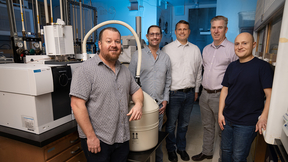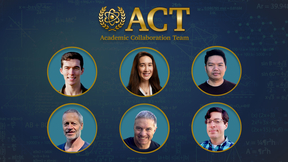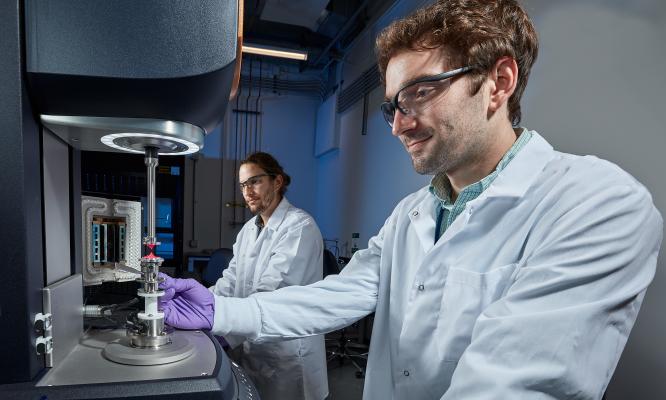Polymer Production Enclave fully operational
 (Download Image)
(Download Image)
A LLNL scientist uses an Instron Universal Testing Machine to perform a non-destructive evaluation.
Through a strong partnership between Lawrence Livermore National Laboratory (LLNL) and Kansas City National Security Campus (KCNSC), a new concept of concurrent engineering and accelerated development became a reality with the start of an enclave designed to deliver key components for the U.S. nuclear warhead modernization programs.
Completed in 2021 as a state-of-the-art design and production facility, the Polymer Production Enclave at LLNL is now fully operational and will house both Livermore and KCNSC personnel working in tandem.
The initial concept for the enclave began in 2019 when KCNSC and LLNL recognized the need for a facility on Livermore’s campus where both additive manufacturing design and production capabilities to support the U.S. nuclear deterrent could be integrated.
“The previous model of developing components was very serial and resulted in components taking eight to 10 years to develop, certify and produce,” said Bradley Wallin, principal associate director for Weapons Complex Integration Directorate at LLNL. “With the enclave, both design and production agencies work together in parallel to provide real-time feedback that will be integral to reducing production time and cost.”
LLNL scientists use a rheometer — an instrument that characterizes the flow of a substance in response to forces — on a silicone ink formulation to ensure that it will be suitable for direct ink write applications.
Inside the building, the various manufacturing rooms have been outfitted to be close replicas of the workspaces, environment and equipment available at KCNSC, so both partners can access the same resources while working in parallel at each site. This includes an ink processing room where polymer feedstocks are controlled for porosity and composition, a post-production quality control lab where materials are characterized and evaluated and conference rooms for real-time exchanges between KCNSC and other stakeholders.
Within the first few weeks of operating, the polymer production teams have already started reaping the benefits of their collaboration, including the “direct-ink-writing” 3D printing process fine-tuned and matured by Livermore for silicone materials, and modifying a new non-destructive evaluation method to be more practical and user-friendly for technicians.
“With both LLNL and KCNSC coming together and leveraging our collective expertise in additive manufacturing and direct ink write technology, there is a growing realization that the enclave will give us the opportunity to navigate the digital manufacturing revolution,” said Dan Bowen, chief scientist at KCNSC. “As such, the enclave will serve as guide for more agile and responsive cross-site collaboration with the nuclear security enterprise, and we are really excited about what will come next in our collaboration.”
Contact
 Michael Padilla
Michael Padilla
[email protected]
(925) 341-8692
Related Links
Kansas City National Security CampusTags
Strategic DeterrenceFeatured Articles








